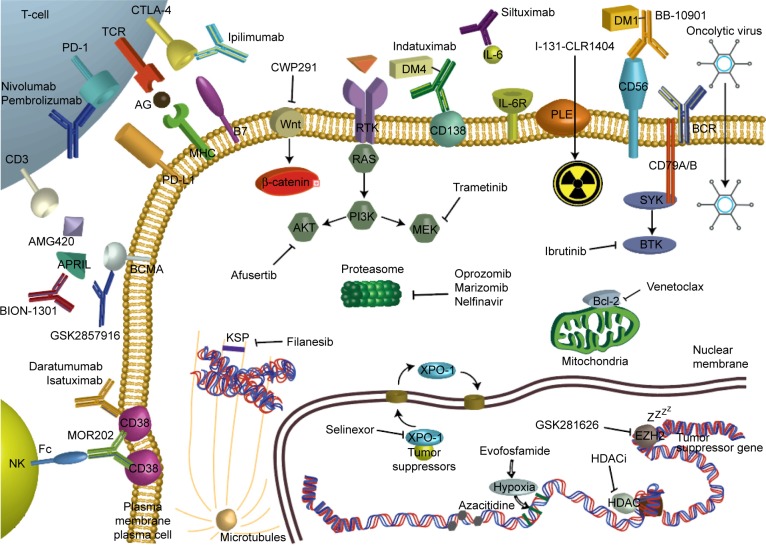Figure 1.
Depicted mechanisms of action of emerging therapies in the treatment of multiple myeloma.
Abbreviations: AG, antigene; AKT, protein kinase B; APRIL, a proliferation-inducing ligand; Bcl-2, B-cell lymphoma 2; BCMA, B-cell maturation antigen; BCR, B-cell receptor; BiTE, bispecific T-cell engager; BTK, Bruton’s tyrosine kinase; CAR, chimeric antigen receptor; CTLA-4, cytotoxic T-lymphocyte-associated protein 4; DM maytansinoid; EZH2, enhancer of zeste homolog 2; Fc, fragment crystallizable; HDAC, histone deacetylase; HDACi, histone deacetylase inhibitor; IL, interleukin; KSP, kinesin spindle protein; MHC, major histocompatibility complex; MEK, mitogen-activated protein kinase; NK, natural killer; PD, programmed cell death; PD-L, programmed death-ligand; PI, proteasome inhibitor; PI3K phosphatidylinositide 3-kinases; PLE, phospholipid ethers; SINE, selective inhibitor of nuclear export; SLAM, signaling lymphocytic activation molecule; SLAMF7, self-ligand receptor of the SLAM family member 7; SP, kinesin spindle protein; SYK, spleen tyrosine kinase; TCR, T-cell receptor; TCRt, T-cell receptor-modified T-cells; XPO-1, exportin 1.

